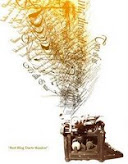Usually frescoes are made when the plaster is still wet, though sometimes artists will add details to plaster when the main part of the painting has already dried. Painting done on dry plaster does not last as long as painting done on wet plaster.
Frescoes were often created directly on walls. The plaster would be mixed and spread on the wall. After about an hour it would be solid enough to paint on. Then the artist would have about ten hours in which to complete the painting before the plaster dried. For this reason, many paintings were done in sections rather than all at once. The artist would decide how much he could paint in ten hours and then mix enough plaster to cover the area. Then he could rest. When he was ready to paint again, he mixed more plaster.
When Michelangelo painted the ceiling of the Sistine Chapel, he created an enormous fresco. He painted one day’s section and then, when he came back to paint the next day’s piece, he scraped away a little before starting so the sections were connected. Imagine how long it took to paint the entire ceiling and the walls of the chapel!
 Check back for tomorrow’s post all about the Sistine Chapel ceiling (shown above).
Check back for tomorrow’s post all about the Sistine Chapel ceiling (shown above).






No comments:
Post a Comment